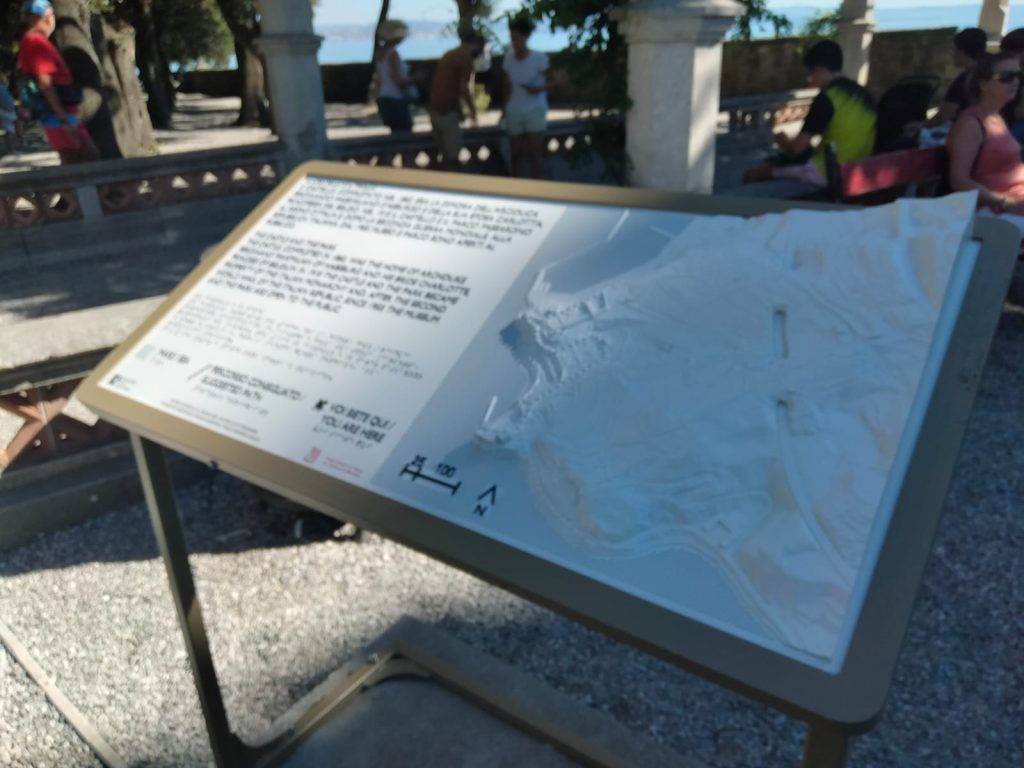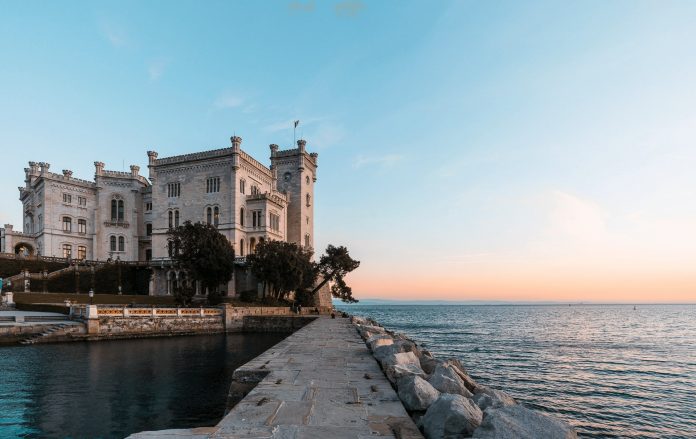by InTrieste
The historic Miramare Park has long drawn visitors to its serene pathways, magnificent trees, and the grandeur of the Miramare Castle. But in recent weeks, the park’s allure has taken on a new dimension—one that is not only visual but tactile.
A set of new tactile panels, designed to offer a more inclusive experience, have sparked curiosity and admiration among visitors during the busy vacation season. Installed as part of a larger effort to enhance accessibility, these innovative panels ensure that the park’s beauty and history can be enjoyed by everyone, including the elderly, those with visual impairments, and individuals with mobility challenges.

The panels, three of which were recently installed in key locations throughout the park, are the latest in a series of upgrades that highlight a growing trend across Europe’s historic sites: accessibility for all. Designed with meticulous attention to detail, the panels feature raised maps, 3D models, and relief illustrations, all meant to be explored by touch. They are also accompanied by large, high-contrast text in Italian, English, and Braille, ensuring that language is no barrier to discovery.
In front of the Bora Gate, a prominent entry point to the park, visitors can now find a tactile map that lays out the park’s main points of interest, including suggested routes that are friendly to those with mobility issues. Nearby, another panel showcases a 3D model of the castle, allowing visitors to feel its architectural details and better understand the surrounding topography.
Near the café, a third panel offers a tactile representation of the park’s elegant parterre, with its statues, fountains, and neatly trimmed hedges. The panels, positioned at child-friendly heights and angled for wheelchair access, invite everyone to engage with the park in a way that feels personal and immersive.
Funded through the museum’s accessibility initiative, these tactile installations are part of a broader mission to make one of Italy’s most cherished landmarks more inclusive. “The tactile panels allow us to welcome all kinds of visitors to experience the park’s history and beauty on their own terms,” a museum spokesperson said. “This is just one step in our ongoing commitment to inclusivity.”
The final phase of the project is expected to be completed in the coming months, with the installation of a fourth panel near the Castelletto, a charming structure that has undergone extensive restoration. This addition will mark the culmination of years of work to rejuvenate one of the most picturesque corners of the park.
The initiative has already been warmly embraced by the public. Last year, a similar multilingual tactile panel for the blind and visually impaired was installed near the Serre Nuove greenhouse area, thanks to support from the Lions Club Trieste Alto Adriatico. The panel proved popular among visitors and helped inspire the current expansion of the project.
As the summer months draw to a close, Miramare’s tactile panels stand as a testament to the power of inclusivity—reminding us that the beauty of the past is something we can all share, regardless of our abilities.





























